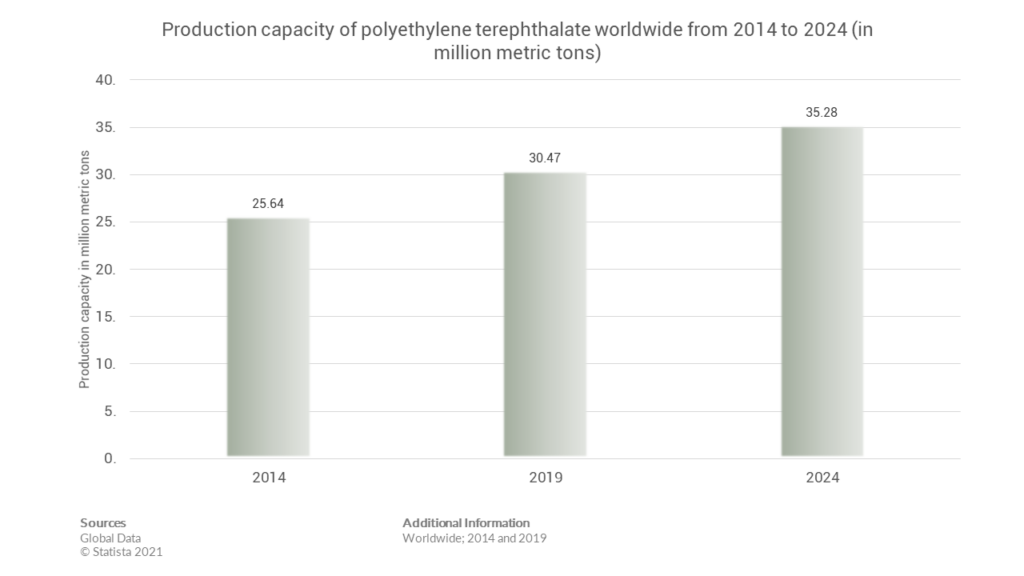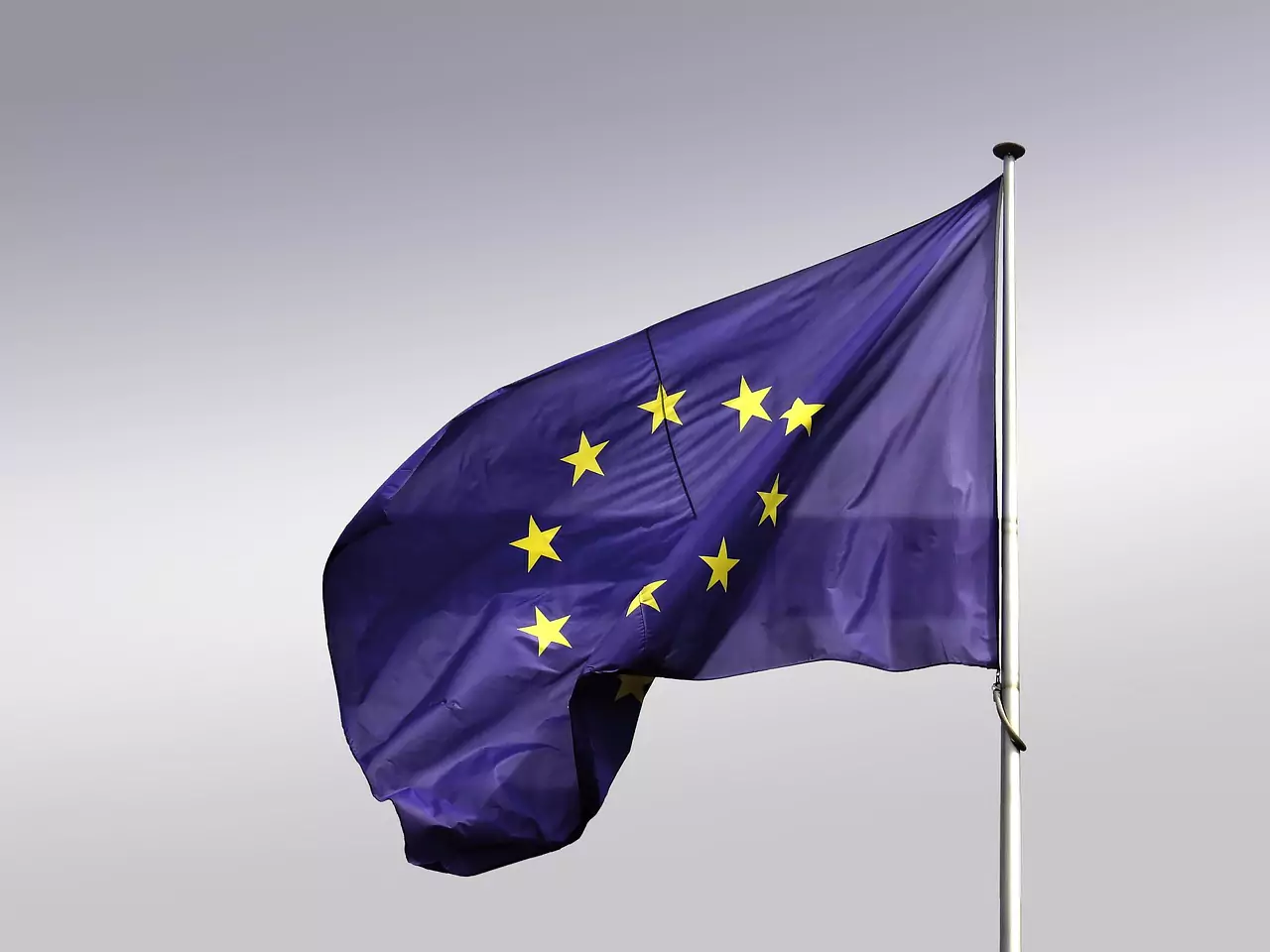The annual production capacity of polyethylene terephthalate (PET) worldwide has continuously grown. PET has become one of the most widely used materials for bottling beverages, and its demand is only increasing with time. According to recent reports, the global production capacity of PET is expected to grow by over 35 million metric tons mainly due to PET bottle making.
One of the primary reasons behind this growth in production capacity is the rising demand for bottled water and soft drinks across different regions. The packaging industry has also witnessed a significant shift towards sustainable and eco-friendly packaging solutions, and PET bottles have emerged as a popular choice due to their recyclable properties. With companies adopting green initiatives and consumers becoming more environmentally conscious, manufacturers are investing heavily in expanding their PET production facilities worldwide. Some studies even argue that PET bottles are better for the environment than glass bottles as explained in this BBC article in detail. It in undoubted though that using too many single use plastic bottles is not good in any case with CNN covering the gigantic scale of water bottle consumption here (1,000,000 water bottles sold every minute).
Uncovering the Production Capacity of Polyethylene Terephthalate
The global production capacity of polyethylene terephthalate (PET) has been steadily increasing over the years. In 2014, it stood at approximately 25.64 million metric tons; in 2019, it had grown to about 30.47 million metric tons. This significant increase can be attributed to the growing demand for PET products across various industries.
This growth is driven mainly by the increased demand for PET in various industries, such as packaging, textiles, and electronics. In addition, the increasing awareness of environmental issues has led to a shift from traditional materials to recyclable PET.
According to market research reports, the global production capacity of PET is projected to reach 35.28 million metric tons by 2024. Asia Pacific remains the largest producer of PET, with China being the leading country in production capacity. The region’s rapid economic growth and vast population create a high demand for products that require PET as a raw material.

Discovering the Unknowns of This Giant Marketplace
Largest Markets Areas
According to recent research, the Asia-Pacific region was the largest market for polyethylene terephthalate in 2022. Furthermore, North America was the second-largest region in the global polyethylene terephthalate market in 2022. The rise of demand for packaged food and beverages is among the key drivers contributing to this growth in this region. Moreover, there is an increase in environmental awareness which is driving manufacturers towards sustainable packaging solutions.
Countries That Cover The Industry
The global polyethylene terephthalate (PET) market is dominated by a handful of countries, including Brazil, China, France, Germany, India, Indonesia, Japan, South Korea and Russia, Australia, the United States, and the UK. These countries are significant producers of PET but also major product consumers in various sectors, such as food and beverage packaging and textiles.
Products That Are Made With Polyethylene Terephthalate
Polyethylene terephthalate, the chemical name, or PET for short, is a popular and versatile plastic material used in a wide range of products worldwide. One of the most common uses for PET is in producing bottles and jars for drinks, food, cosmetics, and other household products. PET bottles are lightweight, shatterproof, and recyclable, making them an eco-friendly option that consumers appreciate.
Aside from bottles and jars, PET can be found in clothing materials such as polyester fabrics. This synthetic fabric has become increasingly popular due to its durability and low cost compared to natural fibers like cotton or wool. Additionally, industrial strapping made from PET is widely used in shipping and packaging industries because it is strong enough to secure packages without breaking under pressure.
Discovering the Incredible Uses of PET Worldwide
Polyethylene Terephthalate is widely used in the packaging industry due to its unique properties such as durability, transparency, and lightweight nature. It is widely used for bottling beverages and food packaging due to its strong, clear, and light characteristics. It has become increasingly popular because of its durability and cost-effectiveness. PET is also recyclable, making it an environment-friendly choice in packaging. It is processed with blow molding for most type of bottles.
One of the main reasons PET is used worldwide for bottling beverages is that it does not react with the contents inside. This means that the taste and quality of the drink remain intact even after prolonged storage periods. Additionally, PET bottles are transparent, which allows customers to see what they are buying before making a purchase. The use of PET in food packaging has also increased significantly over the years due to its many benefits.
Wrapping Up
The production capacity of polyethylene terephthalate (PET) worldwide has been on a steady upward trajectory. PET is a type of plastic commonly used in producing beverage bottles, food packaging, and textiles. This growth can be attributed to increased demand for PET products across various industries. The future looks exceptionally bright for investors keen on investing in this lucrative industry. Several factors, such as technological advancements, increased focus on sustainability and cost-effectiveness, and favorable government policies, have driven the rise in production capacity. These factors have created an enabling environment for companies to increase their production capabilities while ensuring they meet environmental standards. As more companies shift towards sustainable practices, PET will continue to play an integral role in meeting global packaging needs.




